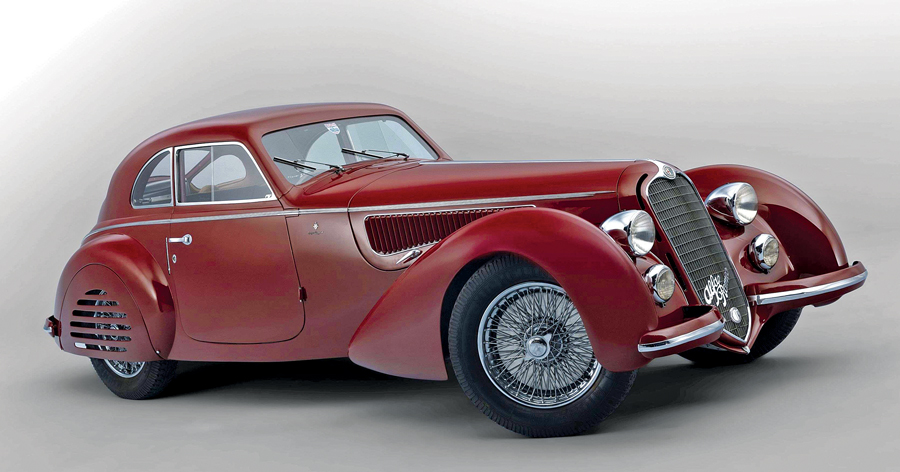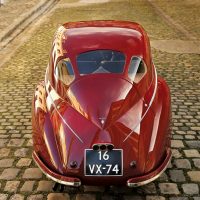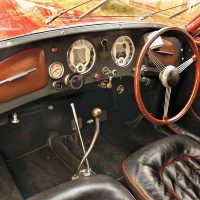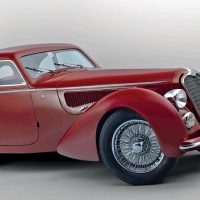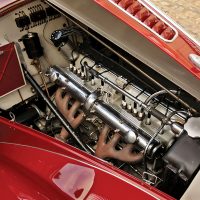SCM Analysis
Detailing
| Vehicle: | 1939 Alfa Romeo 8C 2900B Berlinetta by Touring |
| Years Produced: | 1936–39 |
| Number Produced: | Five (Touring Berlinetta) |
| Original List Price: | $65,000 |
| SCM Valuation: | $11,500,000 |
| Tune Up Cost: | $2,500 |
| Chassis Number Location: | Plate riveted inside engine compartment; stamped on front cross member |
| Engine Number Location: | Plate riveted inside engine compartment and on engine mount leg, stamped in engine mount leg |
| Club Info: | Alfa Romeo Owners Club |
| Website: | http://www.aroc-usa.org |
| Alternatives: | 1938 Bugatti Type 57SC Atlantic, 1938 Mercedes-Benz 540K Autobahn Kurier, 1931–34 Alfa Romeo 8C 2300 Monza |
| Investment Grade: | A |
This car, Lot 20, sold for $18,999,558, including buyer’s premium (€16,745,600, €1=$1.13), at the Artcurial Rétromobile auction in Paris, FRA, on February 8, 2019.
I will admit it. I find some pleasure in having my observations and opinions validated. Call me human.
The joy of being a professional appraiser is that my job is meant to always be objective. As emotionally excited as I may become about a car, all I can do is consider the vehicle, identify its attributes of value and observe how the market responds to them at a particular moment in time.
What observations and opinions are in play here? There is almost no way in today’s market to accurately consider values of cars by marque or model.
As we discussed in the SCM Insider’s Seminar at the January 2019 Gooding & Company Scottsdale venue: “What is the price of a painting by David Hockney?” The answer is, “It depends.”
The Alfa Romeo 8C 2900 is by all measures one of the greatest automotive masterpieces of all time. It is arguably the most sophisticated and capable road-going high-performance car of the decade preceding World War II, and it remained an engineering and performance tour de force in the first years after the war as well. It still won races. Almost all carried stunning coachwork by Italian masters and have been treasured as special objects from new.
Why didn’t this car set a record?
I last wrote a profile about an Alfa Romeo 8C 2900 in 2016, when analyzing the sale of the Touring-bodied 8C 2900 Spider sold in August of that year at RM Sotheby’s Monterey Auction. That car was from the collection of Sam and Emily Mann (November 2016, Etceterini Profile, p. 92).
The Spider went to its new owner for the considerable sum of $19.8 million. I observed at the time that the Touring Spider had sold well, considering the sale of the beautiful and largely more original ex-Terry Cohn Pinin Farina 8C 2900B Corto cabriolet to Lawrence Auriana in August 1999 for $4.072 million — $5.9m in 2016 dollars. But I also opined that the Touring was difficult to substitute, even with the checkered past it had.
Because of that sale, many were somewhat surprised to see our subject car — which is arguably a more original 8C 2900 Touring Berlinetta — sell for less than the Spider did two-and-a-half years ago.
Many predicted a record price for our subject car in Paris, and as a consequence, there was some murmuring when the hammer came down and the car was declared “ajdugé” at less than $19 million, including the newly increased buyer’s commissions of 16% for the first €900,000 and 12% on the amount over. Was there something suspicious in its history of this Alfa that held the price down? Did the Artcurial team somehow do less than they could have in marketing and selling the car? Was a global decline in the top end of the market dampening the result?
No mysteries here
From what I deduce from my research, chats with colleagues and friends and my observation of the current market, the answers seem to be clear and not at all mysterious.
Let’s step back to our question about Hockney paintings. The Alfa Romeo 8C 2900 is a very desirable object. But not all 8C 2900s are as desirable as others.
I was not present in Paris to inspect the car. However, I spoke with a number of people who were there and saw the car “in the flesh.” I spent a great deal of time poring over the plentiful contemporary — and period — photos in the extensive Artcurial catalog description.
When we consider the attributes of value, the car has a known history from 1939, which is a very good thing. It was listed as a 1939 car, although the catalog recounted its completion in 1938 and its registration in that year to an unknown Italian. Nevertheless, it has had a series of long-term caretakers from almost new. There seems to be nothing adverse to note on the mechanical side — except that the images of the engine and gearbox show a great deal of oil glistening on surfaces.
Things begin to get a bit tricky when it comes to the body and interior.
First, quite frankly, it is not the best looking of the late-1930s Alfa Berlinettas. The A-pillars are a bit thick, and the rear window treatment is awkward at best, with a strange three-piece arrangement. It is made more curious when looking at period photos of the car in which a more common single rear window appears.
As the catalog states that the car has never been apart for a restoration — but was rather maintained as required — no mention is made of when, where or why the rear body was modified. At some point, the small, elegant “semi running boards” were also removed. Perhaps some of these adjustments were made during the color changes that occurred in the past.
The interior has also been changed a number of times in the car’s history. It showed a very 1970s look that is quite out of character with the car’s design. Various other details of trim and badging speak to a period of decades in which this Alfa was simply a car — and not a treasured historic object. As such, it was kept in running, usable condition during a period of time when it may have been difficult to find correct pieces or the interest in pure originality was not what it is today.
There’s nothing particularly wrong with that — at least the Alfa wasn’t abandoned in a field — but this car presents as an interesting restoration project rather than a carefully maintained car to preserve.
It is a testament to how things were done in a rather quick and dirty style to keep an old motor on the road. The good thing is that restoration costs are a fraction of total value in a car such as this. Spending $1 million or so will see this car brought back to a vivid, correct, appropriate 1939 state.
Not the prettiest 8C 2900
However, whether it might be a contender for Best of Show honors at Pebble Beach is another story. It’s just not as attractive as the 2018 Pebble Beach winner, or in my opinion, any of the other 8C 2900 Berlinettas.
This is where the Hockney Effect comes into play. The reality is that this is a $19 million 8C 2900. It is not a $25 million or $40 million example — which I am certain exist. As with Ferrari 250 GTOs, potential buyers may want one more than anything, but they will only pay the price appropriate to that particular example.
Artcurial did all they could to present this car as a star. Their marketing effort cannot be faulted — even if the romance of the consignor’s everyday relationship with this and his other cars didn’t at the end of the day add real value.
There is no group pricing available for any car today — most especially at the highest end of the market.
The very long-term owner of this Alfa Romeo did as well as could possibly be imagined on this day, and the new owner joined a very exclusive club, albeit with a “junior membership” — which was also appropriately priced. Well done for all, in context. ♦
(Introductory description courtesy of Artcurial Motorcars.)
